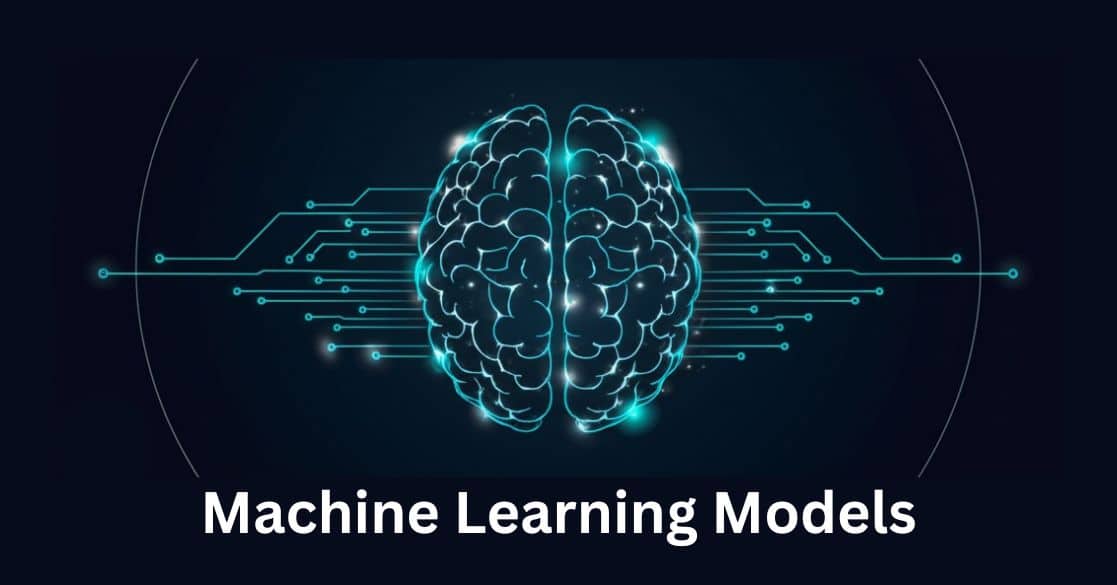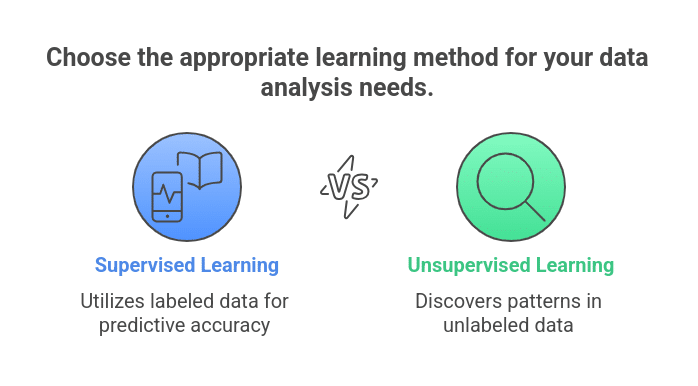- What is a Machine Learning Model?
- Types of Machine Learning Techniques
- Top 5 Machine Learning Models
- How to Build a Machine Learning Model?
- Choosing the Best Model for Your Data
- What Are Deep Learning Models?
- Applications of Machine Learning Models
- Future of Machine Learning Models
- Conclusion
- Frequently Asked Questions (FAQs)
- Our Machine Learning Courses
Machine learning (ML) is revolutionizing various sectors through predictive analytics, automation, and smart decision-making. Ranging from fraud detection to personalized recommendations, ML models bring businesses to the next level in data insight and decision-making.
What is a Machine Learning Model?
A machine learning model is an algorithm trained to identify patterns within data and provide predictions or classifications. These paradigms are highly utilized in industries such as finance, healthcare, marketing, and artificial intelligence.
The model learns from training data, identifies relationships, and applies these learnings to new, unseen data to make decisions.
Types of Machine Learning Techniques
Machine learning models are classified into three main categories:
- Supervised Learning – Trained on labeled data (input-output pairs). Used for classification and regression tasks.
- Unsupervised Learning – Identifies hidden patterns in unlabeled data. Used for clustering and dimensionality reduction.
- Reinforcement Learning – It is an adaptive training method used to train machines by interacting with the environment and receiving feedback for the actions taken. Applications range from robotics to the gaming industry and, thus, towards an area called AI-driven automation.
Top 5 Machine Learning Models
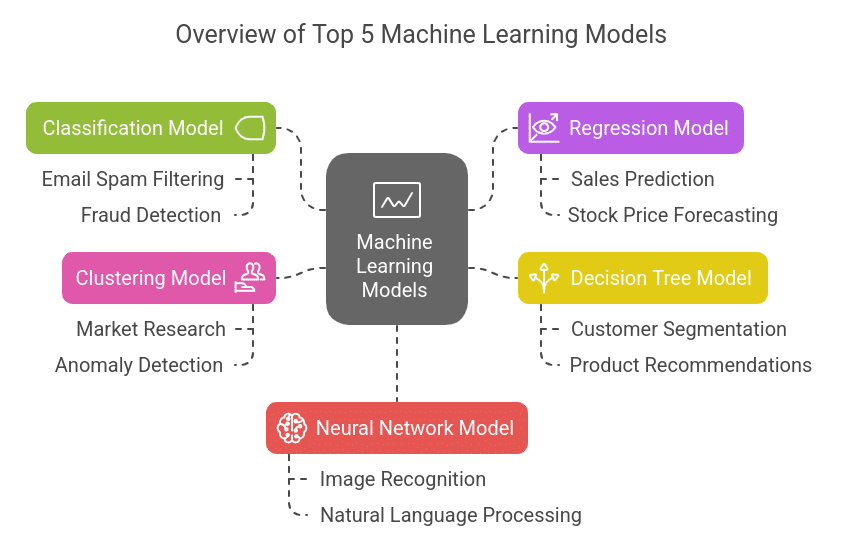
1. Classification Model
A classification model categorizes data into predefined classes. It is widely used in scenarios where the output falls into distinct categories, such as “spam or not spam” or “customer will buy or not buy”.
Best for: Email spam filtering, fraud detection, sentiment analysis.
Example: Logistic Regression is a popular classification model for binary classification problems.
2. Regression Model
Regression models predict continuous values based on input features. They help in understanding relationships between variables and making numerical predictions.
Best for: Predicting sales, stock prices, weather forecasting.
Example: Linear Regression is commonly used to forecast housing prices based on location, size, and amenities.
3. Decision Tree Model
Decision tree is a tree-like structure that helps in decision-making by breaking down a dataset into smaller subsets based on conditions. The final decision is made by tracing a path from the root node to a leaf node.
Best for: Customer segmentation, recommendation systems, risk assessment.
Example: E-commerce platforms use decision trees to recommend products based on user browsing behavior.
4. Clustering Model
Clustering models group similar data points together based on common patterns. They are widely used in market research, fraud detection, and medical diagnostics.
Best for Customer segmentation, anomaly detection, and image segmentation.
Example: K-Means clustering is commonly used in customer segmentation to target specific audiences with personalized marketing.
5. Neural Network Model
Neural networks mimic the human brain by processing data through interconnected layers of neurons. These models excel at handling complex, high-dimensional data.
Best for: Image recognition, natural language processing, deep learning applications.
Example: Convolutional Neural Networks (CNNs) are used in facial recognition and medical image analysis.
How to Build a Machine Learning Model?
Building a machine-learning model involves the following steps:
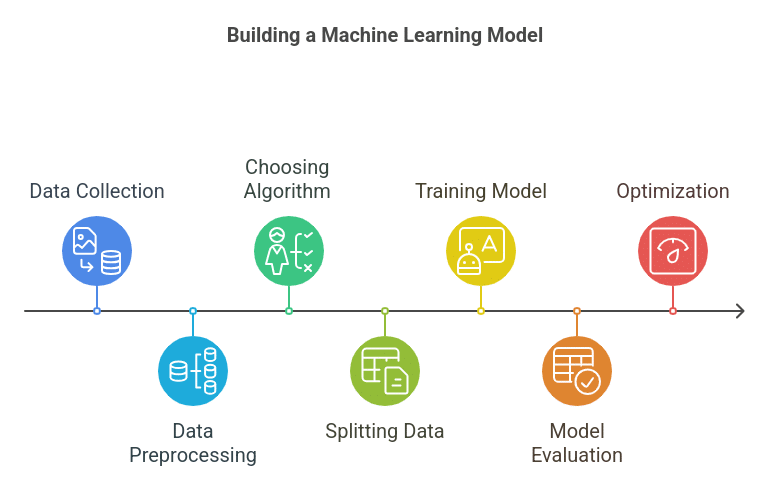
- Data Collection – Gather relevant and high-quality data.
- Data Preprocessing – Clean and structure the data for analysis.
- Choosing the Right Algorithm – Select a model based on the problem type.
- Splitting Data into Training and Testing Sets—Typically, 80% training and 20% testing ensure a reliable model.
- Training the Model – Use Python libraries like Scikit-learn, TensorFlow, or PyTorch.
- Model Evaluation – Measure accuracy using precision, recall, and F1-score.
- Optimization & Fine-Tuning – Improve model performance with hyperparameter tuning.
Master the fundamentals of building and optimizing models with the free Machine Learning Modelling course, covering key techniques for data-driven decision-making.
Choosing the Best Model for Your Data
When selecting an ML model, consider:
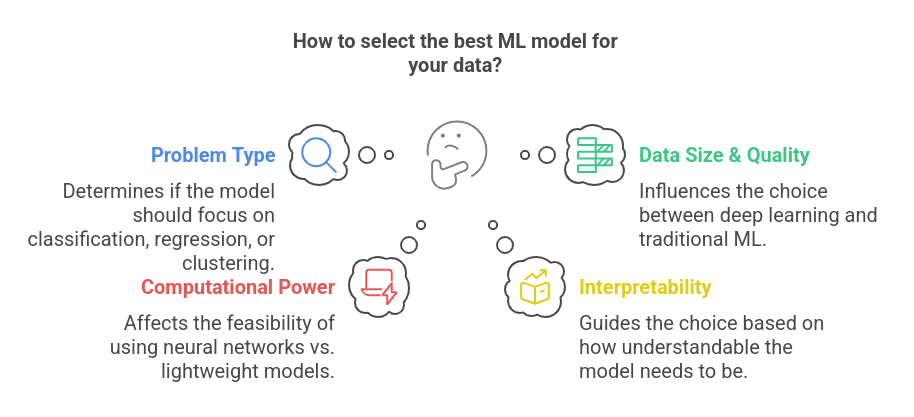
- Nature of the Problem – Classification, regression, or clustering?
- Size & Quality of Data – Large datasets may require deep learning, while small datasets work well with traditional ML.
- Computational Power – Neural networks need high processing power, whereas decision trees are lightweight.
- Interpretability – Simple models like linear regression are easy to understand, while deep learning models are complex.
Tip: In some cases, combining multiple models (ensemble learning) can improve accuracy.
What Are Deep Learning Models?
Deep learning is a subset of machine learning that uses complex neural networks to analyze vast amounts of data. These models are beneficial for image recognition, speech processing, and natural language understanding.
Types of Deep Learning Models
- Convolutional Neural Networks (CNNs) – Used in image processing, object detection, and facial recognition.
- Recurrent Neural Networks (RNNs) – Used for time-series forecasting, speech recognition, and chatbots.
- Long Short-Term Memory (LSTM) – Ideal for sequential data and text-based applications.
Applications of Machine Learning Models
The application of ML models in industries has changed the course of decision-making to data-driven and automated processes:
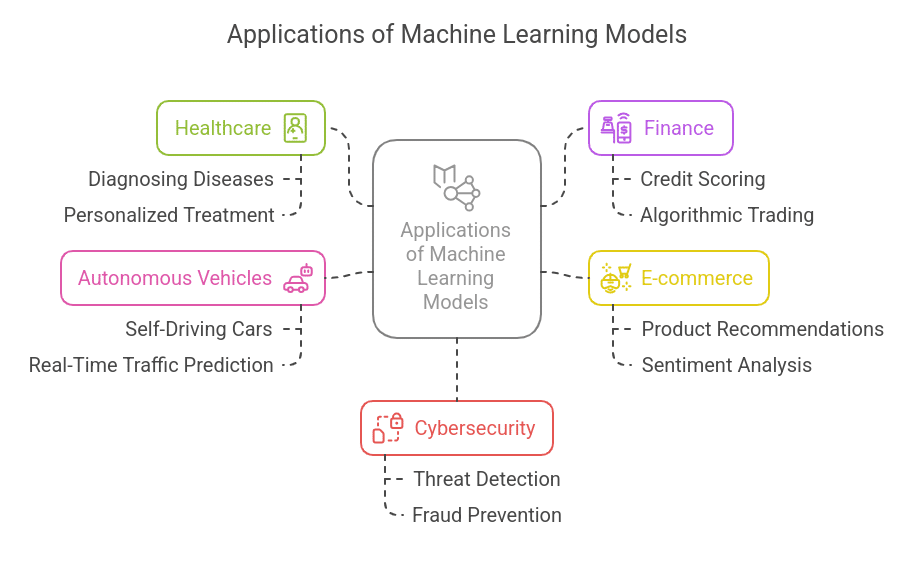
- Healthcare – For diagnosing a disease and selecting a personalized treatment.
- Finance – For credit scoring and algorithm trading.
- E-commerce – Product recommendations and sentiment analysis.
- Autonomous Vehicles – Self-driving cars, real-time traffic prediction
- Cybersecurity – Threat detection, fraud prevention
Future of Machine Learning Models
Machine learning is evolving rapidly with advancements in big data, cloud computing, and AI. Key trends shaping the future include:
✔ AutoML (Automated Machine Learning) – Reduces the need to manually select your own model.
✔ Explainable AI (XAI) – Improves transparency and trust in ML decisions.
✔ Edge AI – Enables real-time processing on devices without cloud dependency.
As businesses continue investing in AI-driven solutions, machine learning models will become smarter, faster, and more efficient.
Conclusion
At the core of AI-driven decisions lie the machine learning models. These ML models can predict customer behavior, detect fraud, or even enable a self-driving car-the options are endless really.
Explore free machine learning courses and become an expert in ML algorithms, models, and their real-world applications.
Frequently Asked Questions (FAQs)
1. Can a decision tree model be used for both classification and regression tasks?
Indeed, decision trees can be used for both. Classification trees predict categorical outcomes (e.g., spam detection), while regression trees predict continuous values (e.g., house prices).
2. How do clustering models handle new data points after training?
Clustering models assign new data points to the nearest existing cluster. The model may require retraining or dynamic clustering adjustments if a new data point significantly differs from existing clusters.
3. What are the challenges of using neural networks?
Neural networks require large datasets, high computational power, and extensive hyperparameter tuning. They also tend to be black-box models, making their decision-making process harder to interpret.
4. When should I use ensemble learning?
Use ensemble learning (e.g., Random Forest, Gradient Boosting) when:
- A single model is not performing well.
- You want to increase accuracy and reduce variance.
5. How can I improve an underperforming machine learning model?
- Feature Engineering – Improve data quality.
- Hyperparameter Tuning – Optimize parameters.
- More Training Data – Helps reduce bias and variance.
- Try a Different Model – Some algorithms work better for certain tasks.
Also Read: Top Machine Learning Tools
Our Machine Learning Courses
Explore our Machine Learning and AI courses, designed for comprehensive learning and skill development.
| Program Name | Duration |
|---|---|
| MIT No code AI and Machine Learning Course | 12 Weeks |
| MIT Data Science and Machine Learning Course | 12 Weeks |
| Data Science and Machine Learning Course | 12 Weeks |
